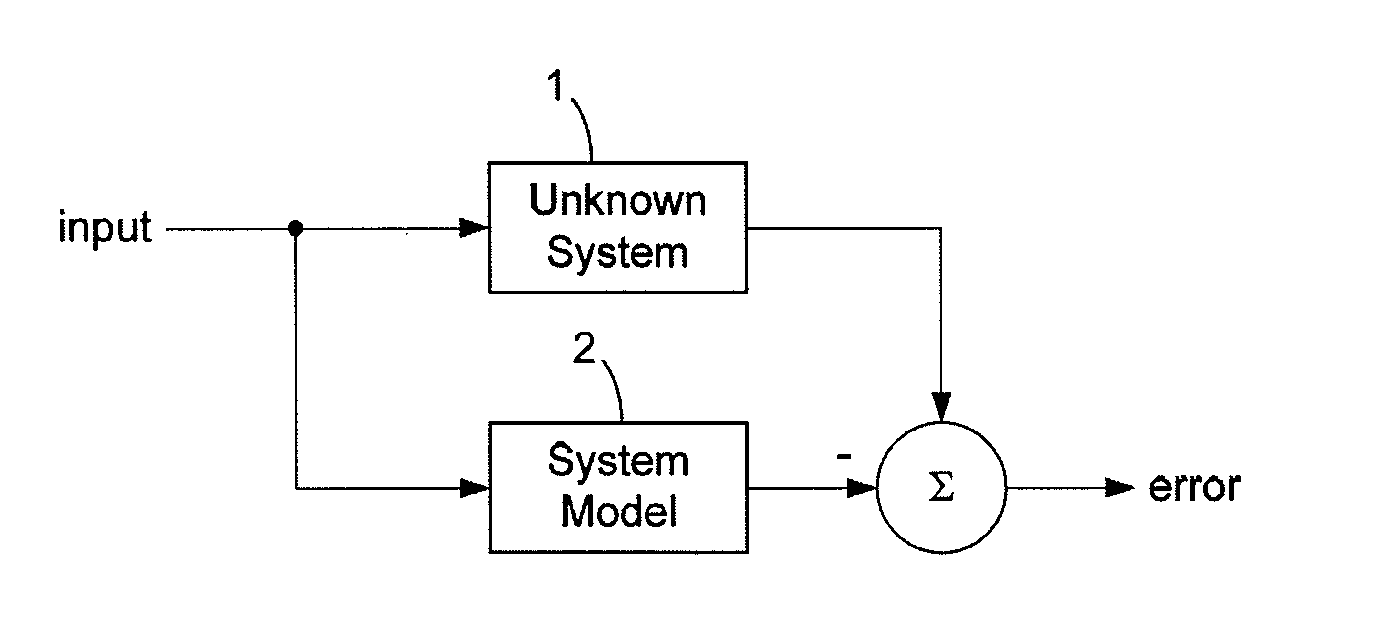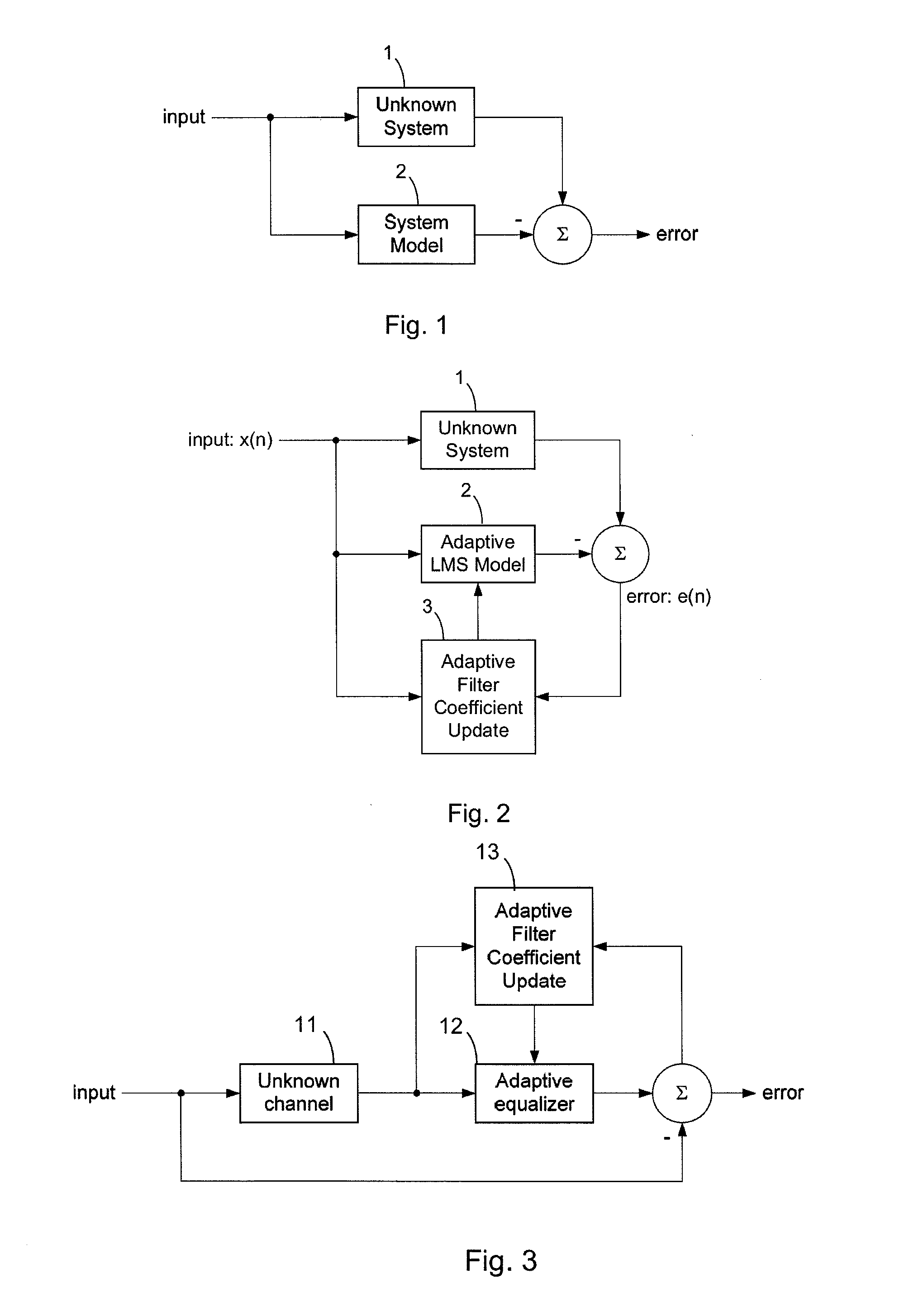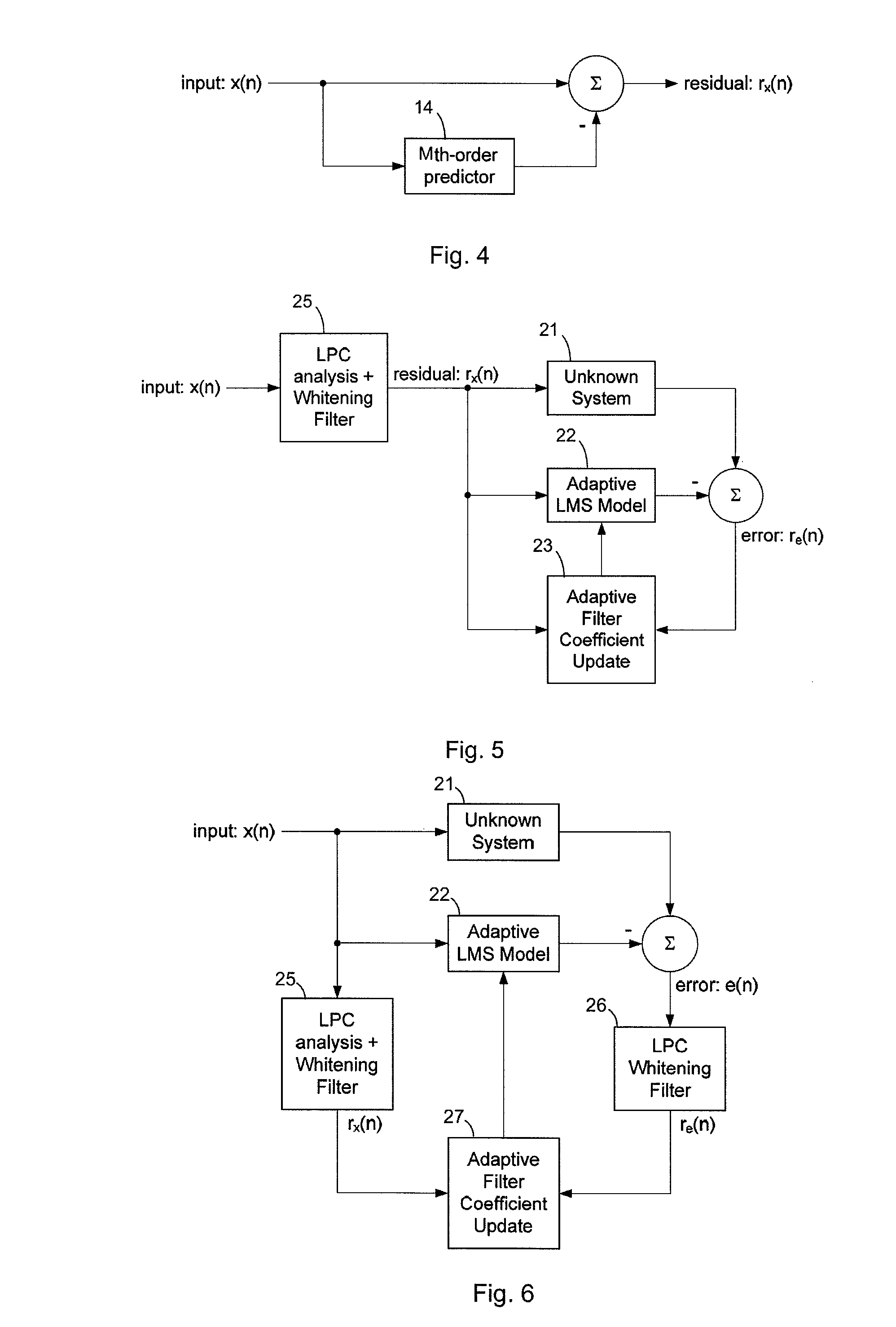Method for Determining Updated Filter Coefficients of an Adaptive Filter Adapted by an LMS Algorithm with Pre-Whitening
a filter coefficient and algorithm technology, applied in the field of system identification, can solve the problems of inability to perform new measurements for every change, inability to accurately estimate the effect of changes, and inability to achieve accurate approximation. the effect of accuracy and decrease of error between the actual and the modeled outputs
- Summary
- Abstract
- Description
- Claims
- Application Information
AI Technical Summary
Benefits of technology
Problems solved by technology
Method used
Image
Examples
first embodiment
[0086]FIG. 7 illustrates a first embodiment, with a normalizing factor being transmitted from an LPC whitening filter to an adaptive coefficient update stage;
second embodiment
[0087]FIG. 8 illustrates a second embodiment, with a normalizing factor being transmitted from an LPC whitening filter to an adaptive coefficient update stage and pre-whitening being outside of the main signal path;
[0088]FIG. 9 illustrates an adaptive equalizer as a first application;
[0089]FIG. 10 illustrates an adaptive echo canceller as a second application;
[0090]FIG. 11 illustrates a feedback adaptive noise control system as a third application;
[0091]FIG. 12 shows a first simplified version of the third application in FIG. 11; and
[0092]FIG. 13 shows a second simplified version of the third application in FIG. 11.
[0093]FIGS. 1-6 were already discussed above.
[0094]FIG. 7 illustrates a first embodiment of the invention. The first embodiment is similar to the configuration in FIG. 5. Figurative elements in FIG. 5 and FIG. 7 denoted by the same reference signs are basically the same. Moreover, the remarks to FIG. 5 are basically also applicable to FIG. 7.
[0095]In FIG. 7, an input sign...
PUM
 Login to View More
Login to View More Abstract
Description
Claims
Application Information
 Login to View More
Login to View More - R&D
- Intellectual Property
- Life Sciences
- Materials
- Tech Scout
- Unparalleled Data Quality
- Higher Quality Content
- 60% Fewer Hallucinations
Browse by: Latest US Patents, China's latest patents, Technical Efficacy Thesaurus, Application Domain, Technology Topic, Popular Technical Reports.
© 2025 PatSnap. All rights reserved.Legal|Privacy policy|Modern Slavery Act Transparency Statement|Sitemap|About US| Contact US: help@patsnap.com



